If you’re after a self-guided walking tour of Dublin that packs a punch, you’ve landed in the right spot.
I’ve lived in Ireland’s capital for 34 years and I’m very confident you’ll love the mini-itinerary that I’ve outlined below.
It includes a one and two day option and it takes in the main things to do in Dublin, unique sights that tourists tend to miss and some historical pubs, too.
Our free Dublin walking tour follows a clear, logical route to ensure that you make the most of your time here. Dive on in!
Day 1 of our self-guided walking tour of Dublin
The Dublin walking tour map above will give you an overview of where our route will take you over each day.
As you can see, each day has a clear route and packs in a mix of key attractions and places you hopefully won’t have heard of.
If you want a guided tour, you’ll find organised Dublin walking tours with excellent reviews right here (affiliate link).
Money saving tip: If you’re planning on visit some of the main fee-paying attractions in the city, the Dublin Pass can save you €50+
1. Molly Malone Statue

Photos via Shutterstock
Day 1 of our self-guided walking tour of Dublin kicks-off at the now-iconic Molly Malone Statue on Suffolk Street in the heart of the city.
The bronze statue shows Molly, a famous character from the Irish song ‘Molly Malone’, who sold ‘Cockles and Mussels’ on the streets of the capital.
The statue was erected in 1988 and it has moved a handful of times. You won’t spend long here, but it’s a nice starting point for your stroll!
2. Trinity College

Photos via Shutterstock
Our second stop of the day is a handy 2-minute walk from the first! Trinity College is one of the most famous landmarks in Ireland.
It is a renowned educational institution and it was established in 1592. It’s also inside the grounds of Trinity that you’ll find the ancient Book of Kells.
Trinity is the oldest university in Ireland and you can take a ramble through its impressive grounds, admire its magnificent architecture and tour the wonderful Long Room Library.
It’s in the Long Room that you’ll find 200,000+ of the college’s oldest books. It’s worth booking the skip-the-line ticket here as it gets busy (this ticket gets you access to Trinity and Dublin Castle).
Related reads: See our guides on where to stay in Dublin + the best hotels in Dublin in 2024
3. The Palace Bar

Photos via The Palace on FB
The next stop on our self-guided walking tour of Dublin is going to be a brief one (I’m not suggesting you go drinking at this stage of the day!).
While there are many old pubs in Dublin, few are as visually impressive as the Palace Bar, which you’ll find a 3-minute walk from Trinity.
This pub was built in 1823 and it stands today, many years later, as a Victorian shrine, of sorts. Admire its impressive interior, first, and then saunter inside for a nosey (you can return here later).
It’s located just inside the cobbled streets of Temple Bar, so you can have a nosey around this area, if you like.
Related reads: See our guides on the best pubs in Dublin, the best Guinness in Dublin and the best pubs with live music in Dublin
4. O’Connell Bridge

Photos via Shutterstock
When you’re ready, take the 3-minute walk to O’Connell Bridge, which spans the murky waters of Dublin’s River Liffey.
O’Connell Bridge replaced Gandon’s Carlisle Bridge, which opened in 1794. The bridge that stands to this day opened back in 1880 and cost £70,000 to build.
It measures at 148 ft in length and 160 ft in width. Named after political leader Daniel ‘The Liberator’ O’Connell it boasts impressive features, like its impressive lanterns.
Related reads: See our guides on spending 1 day in Dublin, 2 days in Dublin and 3 days in Dublin
5. The General Post Office

Photos via Shutterstock
Walk up the historic O’Connell Street (be careful – there are plenty of dodgy characters that hang around here) and head straight from the The General Post Office (GPO) – it’s around a 4-minute walk from the last stop.
The GPO was built during the early 19th century and it’s here that you’ll see some of the more impressive architecture in Dublin, courtesy of the buildings neoclassical design.
This building played a key part in Irish history during the Easter Rising of 1916 when it served as the rebel headquarters. You can take a tour here that’ll immerse you in the city’s past.
6. The Spire

Photos via Shutterstock
One of the more unique places you’ll visit on this walking tour of Dublin is the Spire – it’s less than 1-minute walk from the GPO… you can’t miss it.
Also known as ‘the Monument of Light’ (along with many other colourful nicknames…), the Spire stands 394 feet tall and it was erected in 2003.
I’ll be honest – the Spire is impressive when viewed from afar, but there’s no real point of seeing it up close.
7. The Ha’penny Bridge
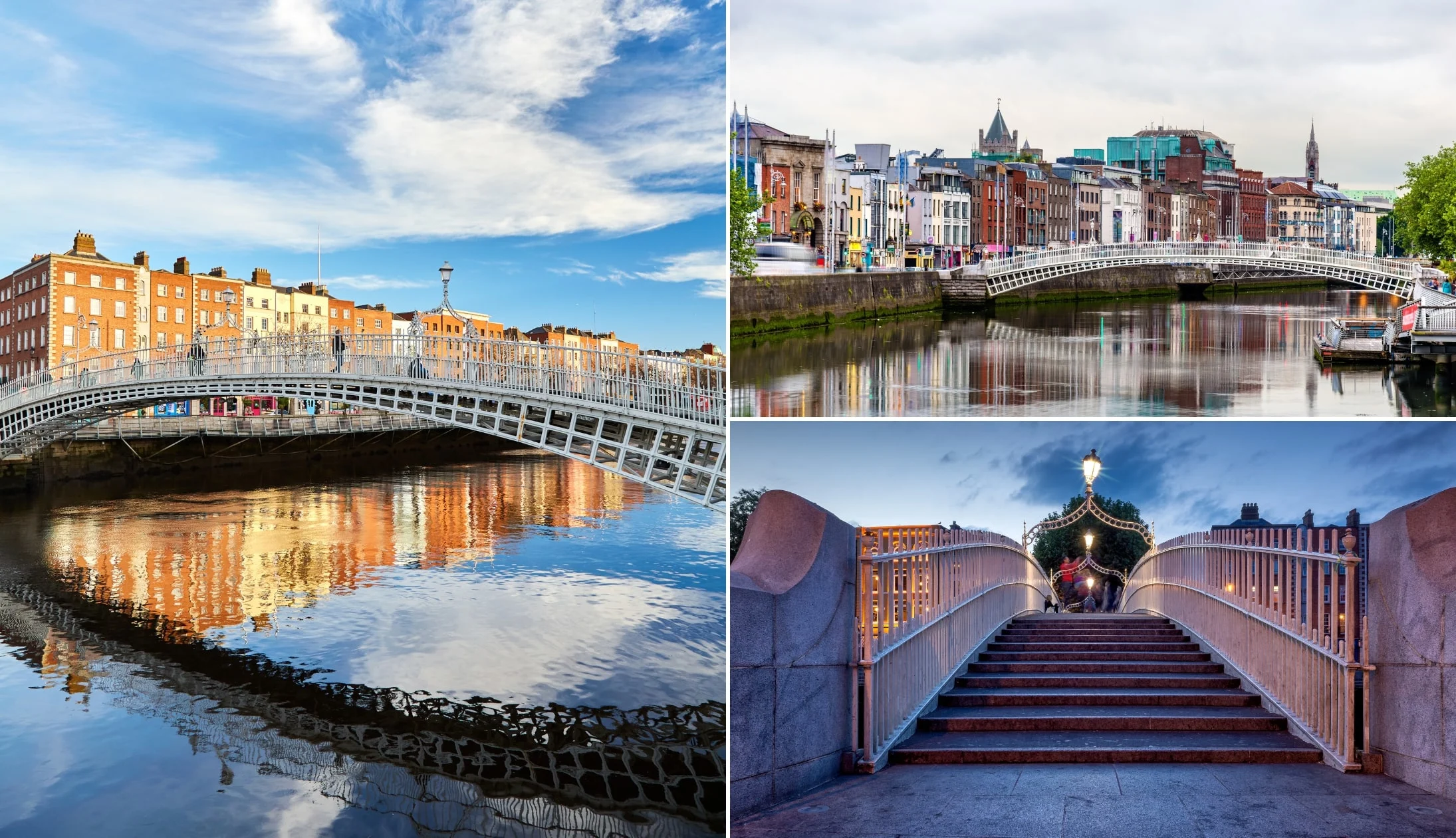
Photos via Shutterstock
The next stop on our self-guided walking tour of Dublin is a 7-minute walk from the Spire and it’s arguably one of the most beautiful bridges in Europe!
The Ha’penny Bridge, officially known as the Liffey Bridge, is an iconic pedestrian bridge that spans the River Liffey that was built in 1816.
It’s name comes from the fact that you once had to pay a toll to cross the bridge. The cost was a Ha’penny and there were turnstiles at either end of the bridge.
The bridge is a little slice of ‘old-Dublin’ that still used heavily to this day. It’s believed that around 27,000 people cross it each day.
Related read: See our guide on how to get around Dublin
8. St. Michan’s Church

Photos with thanks to Jennifer Boyer
You won’t find our next stop, St. Michan’s Church, on many Dublin walking tours, however, it’s well-worth a visit.
It’s a 12-minute walk from the Ha’penny Bridge and it’s here that you’ll find a historic building that dates back to the 11th century.
Oh, you’ll also find crypts with mummies… yes, mummies. In fact, some of the mummies at St. Michan’s are thought to be over 400 years old.
If you’re looking for unique things to see in the capital, make sure to add this one to your self-guided walking tour of Dublin.
9. The Brazen Head
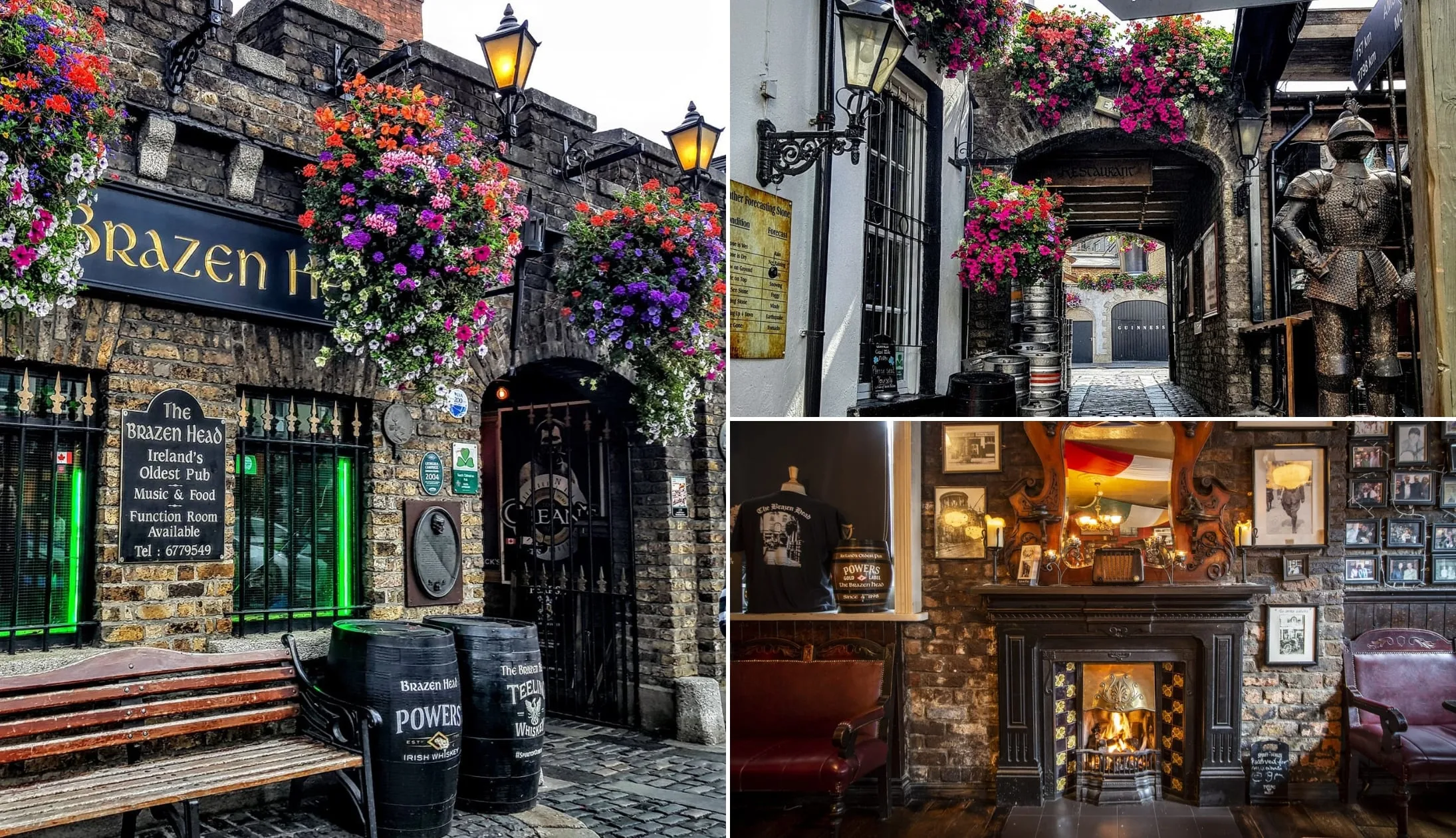
Photos via Shutterstock
We’re off Dublin’s oldest pub, next – The Brazen Head (a 4-minute walk from St. Michan’s).
The present building that you see today dates back to 1754, local legend claims that the site has housed a tavern since 1198.
And though no documents exist to prove that, we know that there’s been a licensed alehouse here since the mid 17th-century at least (which is old enough!).
If you’re feeling peckish, this is a handy lunch-spot. It’s well worth visiting either way as this place is steeped in history.
10. Christ Church Cathedral
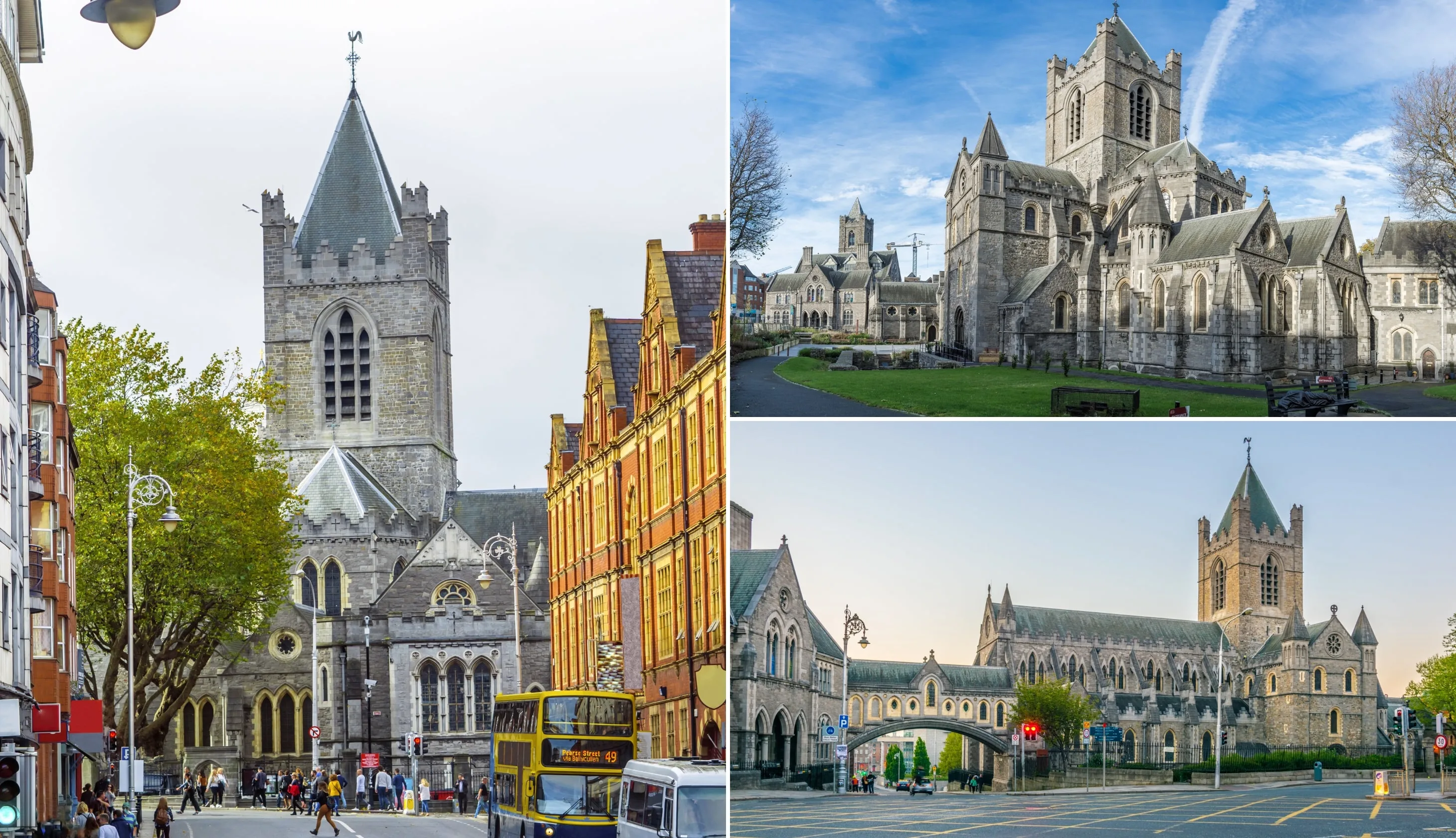
Photos via Shutterstock
One of the most popular stops on this self-guided walking tour of Dublin is the stunning Christ Church Cathedral, a 6-minute walk from The Brazen Head.
Christ Church Cathedral was founded in the early 11th century under the Viking king Sitruic Silkenbeard (amazingly, that is his real name!).
Originally built as a wooden structure in 1030 with the help of an Irish priest, it was rebuilt in stone in 1172.
The current Gothic-style cathedral, with its striking architecture and impressive interior, has been standing since the 12th century.
11. Dublin Castle
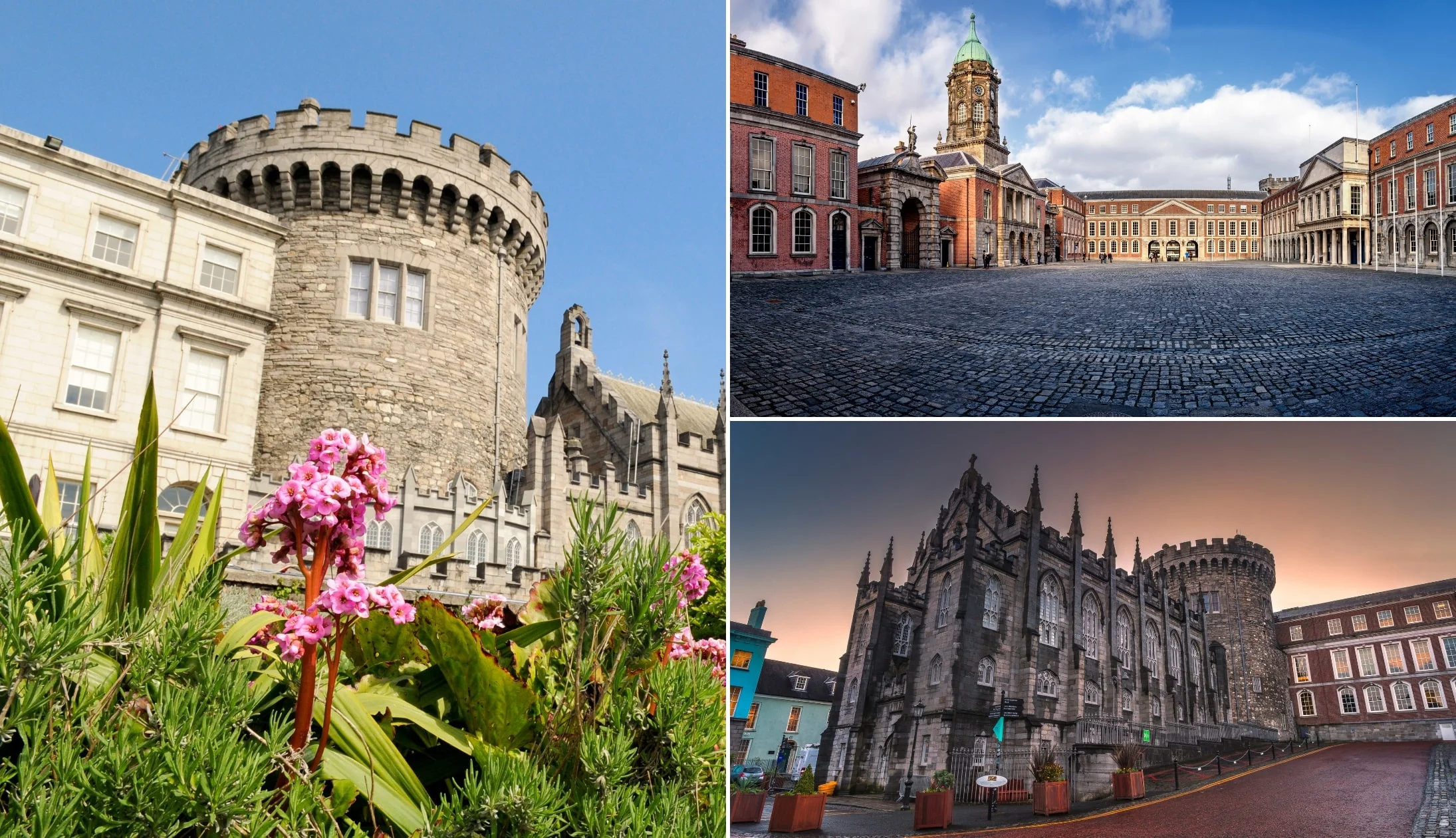
Photos via Shutterstock
Few castles in Ireland receive visitor numbers like our next stop. Dublin Castle is a 4-minute walk away and it’s here you’ll find an impressive structure that dates back over 800 years.
Originally developed as a medieval fortress under the orders of King John of England, work on Dublin Castle was started by Meiler Fitzhenry in 1204 when the city was under Norman rule following the invasion of 1169.
Constructed on elevated ground once occupied by an earlier Viking settlement, it was completed in 1230 and took on the look of a classic Norman courtyard design.
One of the most prominent parts of the castle today, the imposing Record Tower is the only surviving tower of the original Medieval fortifications.
While its rectangular battlements on the roof are actually a 19th-century addition, they look pretty convincing!
Related read: See our guide on the best castles in Dublin
12. St. Patrick’s Cathedral

Photos via Shutterstock
Another firm favourite on this self-guided walking tour of Dublin is located a 12-minute walk from the castle.
St. Patrick’s Cathedral is a historic religious landmark that was founded in 1191. It’s the largest church in Ireland and it boasts Gothic architecture.
When you arrive here, take some time to saunter around the part and admire the cathedral’s exterior, before heading inside to get an eyeful of its outstanding interior.
13. The Guinness Storehouse

Photos © Diageo via Ireland’s Content Pool
Few Dublin walking tours can resist rounding off a day of strolling at The Guinness Storehouse, which is a 17-minute walk from St. Patrick’s Cathedral.
Book your tickets in advance (self-guided or guided) and immerse yourself in the story of the most famous of the many Irish beers.
The building itself is part of the Guinness Brewery and it acts as a seven-story visitor centre that takes visitors through the history of Guinness along with how it’s made and more.
The tour finishes on the rooftop in the impressive Gravity Bar that overlooks Dublin City and beyond.
Day 2 of our self-guided walking tour of Dublin
The Dublin walking tour map above will give you an overview of where our route will take you over each day.
As you can see, each day has a clear route and packs in a mix of key attractions and places you hopefully won’t have heard of.
If you want a guided tour, you’ll find organised Dublin walking tours with excellent reviews right here (affiliate link).
Money saving tip: If you’re planning on visit some of the main fee-paying attractions in the city, the Dublin Pass can save you €50+
1. St. Stephen’s Green

Photos via Shutterstock
We’re going to kick-start day two of our self-guided walking tour of Dublin at St. Stephen’s Green, which is often referred to as the ‘Lungs of Dublin’.
You’ll find the nine hectare/22-acre park at the top of busy Grafton Street when it’s home to commemorative sculptures, extensive trees and a large pond.
It has a pretty wild history that few are familiar with (read more here) and it’s a nice, calm spot to kick-start the day!
2. Leinster House
The second stop of the day takes us 4 minutes down the road to Leinster House – the epicenter of Irish politics.
This is an impressive Georgian building that dates back to the 18th century. Now, while you can take a guided tour, if you like, you’re arguably best off admiring Leinster House from afar.
Unless you’re interested in politics, that is – in that case head on in for a journey back through Ireland’s political past.
3. National Gallery of Ireland

Photo left: Cathy Wheatley. Others: James Fennell (Tourism Ireland)
The National Gallery of Ireland is a 5-minute walk from Leinster House and it’s here you’ll find one of the most popular museums in Dublin.
It’s also one of the best free things to do in Dublin when it’s raining! For visiting art enthusiasts, the National Gallery of Ireland is an absolute must.
This cultural treasure trove houses a vast collection of paintings, sculptures, and decorative arts spanning various periods, from the Renaissance to the present.
Ireland’s artistic heritage can go overlooked by tourists and locals alike – this is an excellent opportunity to immerse yourself in it.
4. Merrion Square

Photos via Shutterstock
Located in Dublin’s charming Georgian quarter, Merrion Square is a delightful mix of greenery and history (and it’s only 5 minutes from our last stop).
The square boasts finely manicured gardens that feel a far-cry from the busy city streets that lay just minutes away.
If you head for a stroll through its grounds, you’ll stumble upon impressive sculptures (including one of Oscar Wilde).
5. Irish Whiskey Museum

Photos by Brian Morrison via Failte Ireland
If you’re taking this self-guided walking tour of Dublin and it’s raining, our next stop will provide some welcome respite from the elements!
You’ll find the Irish Whiskey Museum a handy 15-minute stroll from Merrion Square and it’s here that you’ll discover the story behind the coveted Irish Whiskey.
I’ve done this tour in recent years and it offers a good mix (terrible pub intended…) of sippin’ and storytellin’.
You’ll get an insight into the history of whiskey and how it’s made and there’s also a tasting at the end.
6. Mulligan’s
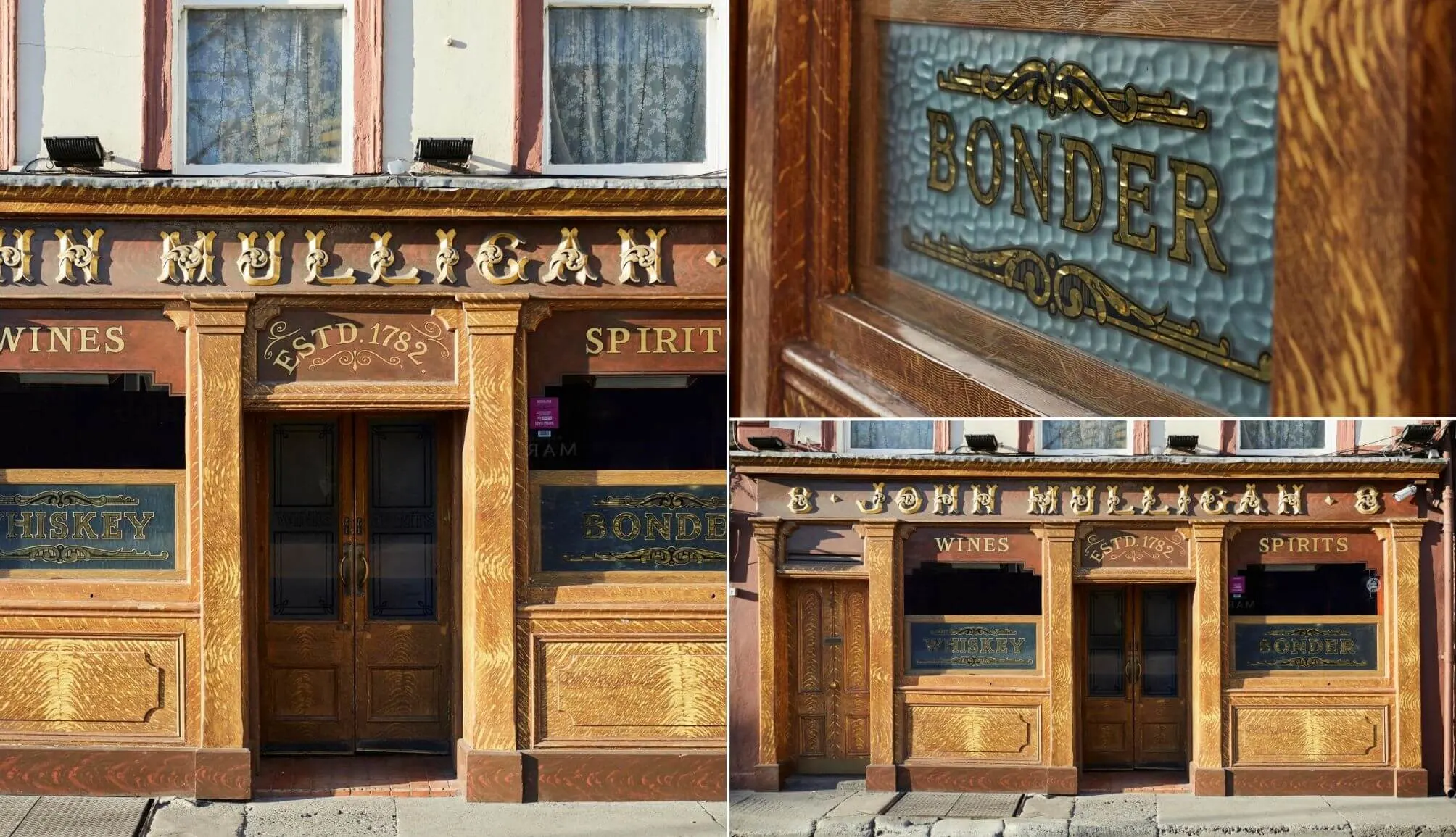
© Tourism Ireland
Many Dublin walking tours take you to the busy pubs in Temple Bar. However, if you want to dodge the tourist traps, take the 6-minute walk from the Whiskey Museum to Mulligan’s.
You’ll find it on Poolbeg Street where it’s loved by locals and tourists alike for its old-worlde charm.
The pub received its license in 1782 but it operated as a Shebeen (a place where drink was sold illegally) for many years before.
The biggest compliment that I can give Mulligan’s is that walking through its doors makes you feel like you’ve stepped back in time.
Expect a lovely, traditional interior, a fine pint of Guinness and a furnishings that have stood the test of time.
7. The Custom House

Photos via Shutterstock
The next stop on our self-guided walking tour of Dublin is the magnificent Custom House, a 4-minute walk from Mulligan’s.
This is an architectural marvel on Dublin’s waterfront and it was designed by James Gandon in the late 18th century.
The Custom House is famous for its neoclassical facade which is best admired from afar, first, before up close.
The building is now home to the Department of Housing.
8. The Famine Memorial

Photos via Shutterstock
Dublin’s Famine Memorial is a poignant tribute to one of Ireland’s darkest chapters in history.
Located on Custom House Quay, a 4-minute walk from the Custom House, these haunting sculptures depict the devastating impact of the Great Famine in the 19th century.
The memorial serves as a solemn reminder of the suffering endured by the Irish people during that time and stands as a testament to the resilience and spirit of those who lived through the tragedy.
9. EPIC HQ

Photo left: Eileen Coffey. Others: Ros Kavanagh (via Fáilte Ireland)
The next stop on our self-guided walking tour of Dublin is a handy 2-minute walk from The Famine Memorial.
EPIC The Irish Emigration Museum explores the profound impact that Irish emigrants have had across the world.
The museum is housed inside a vaulted space and stories are told via interactive exhibitions and striking displays.
You’ll need to pay into this one but it’s well-worth it (especially if it’s raining!).
10. The Jeanie Johnston

Photo left: Gareth McCormack. Others: Dylan Vaughan (via Failte Ireland)
Many Dublin walking tours omit the brilliant Jeanie Johnston Famine Ship which sits a 2-minute walk from the EPIC Museum.
The Jeanie Johnston is an impressive replica of the original ship that transported Irish emigrants to North America during the Great Famine.
The ship is a floating museum that offers an insight into the challenges faced by those Irish men and women that sought a better life across the pond.
You can take a guided tour here where you’ll be immersed in a story that shaped the very DNA of Ireland.
Dublin walking tours FAQs
We’ve had a lot of questions over the years asking about everything from ‘What’s a good route with free attractions?’ to ‘What unique stops should be included?’.
In the section below, we’ve popped in the most FAQs that we’ve received. If you have a question that we haven’t tackled, ask away in the comments section below.
What’s a good route for a self-guided walking tour of Dublin?
If you use our Dublin walking tour map above, you’ll find a clear, logical route that takes in the city’s top sights over the course of two days. You could easily chop and change this route if needed.
Can you walk around Dublin in a day?
You can see the main sights in Dublin city in one day. If you follow the route on our Dublin walking tour map, you’ll only be walking from attraction-to-attraction for a total of 1.5 to 2 hours.
Can you walk around Dublin easily?
Yes. Dublin City is very walkable. Once you have a clear itinerary and know where you’re visiting and when, you’ll have no problem exploring the city on a self-guided walking tour of Dublin.
Keith O’Hara has lived in Ireland for 35 years and has spent most of the last 10 creating what is now The Irish Road Trip guide. Over the years, the website has published thousands of meticulously researched Ireland travel guides, welcoming 30 million+ visitors along the way. In 2022, the Irish Road Trip team published the world’s largest collection of Irish Road Trip itineraries. Keith lives in Dublin with his dog Toby and finds writing in the 3rd person minus craic altogether.


